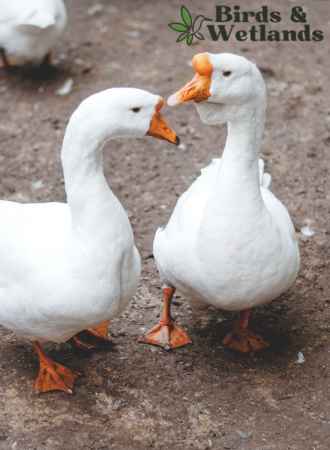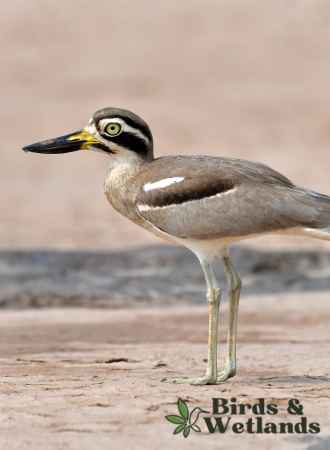Ducks are pretty common in our nation’s parks, gliding in the water and feeding in ponds and lakes. But many people have wondered — do ducks have knees?
Despite the common perception that ducks don’t have knees, they actually do – they’re just hidden behind feathers.
We’ll be exploring the anatomy of ducks and answering this perplexing question from a scientific perspective. Get ready to dive into the world of ducks and discover the truth about their kneecaps and how these unique features allow them to swim, fly and walk.
Join us as we unravel the mystery of duck anatomy and finally set the record straight on whether ducks have knees.
Key Takeaways on Do Ducks Have Knees
- Ducks have knees which are hidden behind their feathers.
- Domestic ducks are more likely to develop leg disorders than wild ducks due to a combination of genetic, nutritional, and environmental factors.
- Ducks have relatively short legs as evolutionary adaptation.
What is the structure of ducks legs?

Most ducks have strong, well-adapted legs that serve various functions in their daily lives. Here are the parts of a reconstructed duck leg:
- Hip joint — The hip joint is the connection between the duck’s body and the thigh bone. This joint allows the duck to move its legs in a wide range of directions, enabling it to swim, waddle, and take off in flight. It also contains a universal joint.
- Femur — The femur or thigh is the upper portion of the duck’s leg and connects the hip joint to the knee joint. The muscles in the thigh provide the power needed for the duck to paddle through the water and generate lift during flight.
- Knee — The knee joint or patella connects the thigh and the shin bone. It is a revolute joint that allows the duck to bend its leg, which is important for swimming and walking.
- Tibia — The tibia is the bone in the shin of the duck’s leg. It is a long, weight-bearing bone that provides support and stability to the leg. The tibia is also an attachment site for muscles, tendons, and ligaments that control ankle and foot movement.
- Ankles (or tarsal joint) — The ankle joint is the connection between the fibula, shin and the foot. This spherical joint is important for finely controlling the foot, allowing the duck to adjust its balance and position while swimming or walking.
- Foot (or tarsometatarsus) — A duck’s foot is webbed, which helps it to paddle through the water. The flat nails on the tips of the toes provide additional surface area for propelling the duck through the water. The webbed feet also provide a stable platform for the duck to stand on when it is on land.
How do ducks bend their knees?
Ducks have knees that permit them to quickly and easily move around their environment the same way as human knees. What is surprising is how these knees bend — forward.
This unique mechanism for movement, known as the anisodactyl foot, consists of four toes with the first toe turned backwards while the three toes pointing forwards. Variations in this structure include the hallux in the rear being reduced in size or elevated above loose ground, as in ducks.
The duck’s knee joint allows the animal a more efficient stride than standard bipedal creatures and helps them keep balance in extremely wet or slippery conditions.
How long is a duck’s leg?

At 5 weeks old, a duck’s long leg reaches 9.37 inches (23.79 cm) from its acetabulum socket to the very tip of its foot.
The length of a duck’s leg varies depending on the species, but they typically range from 4 to 10 inches in length.
Ducks are classified as having short legs compared to other birds since their legs are relatively short compared to their body size. The length of a duck’s leg also depends on the age, as young ducklings have shorter legs than adult ducks.
Will ducks grown for meat develop leg disorders?
Domestic ducks, raised for meat production, are more prone to developing leg disorders than wild ducks due to several factors. These include genetics, nutrition, and environment.
First, genetic factors play a significant role in developing leg disorders in domestic ducks. Selective breeding practices in the poultry industry focus on increasing meat production, which can lead to breeds with physical characteristics predisposing them to leg disorders.
For example, larger duck breeds have a heavier body weight and are more prone to developing leg disorders, as the increased weight places additional stress on their legs and joints.
Second, poor nutrition can also contribute to developing leg disorders in domestic ducks. The ducks are typically fed a diet that is high in carbohydrates and low in essential nutrients, such as calcium and phosphorus. This imbalance can lead to deficiencies in these essential minerals, which are necessary for forming and maintaining strong bones and joints.
In addition, the lack of foraging opportunities for domestic ducks means they do not have access to natural sources of these nutrients, which can further exacerbate the problem.
Finally, the environment in which domestic ducks are raised also plays a role in developing leg disorders. Ducks are often raised in crowded, confined spaces, leading to physical stress on their legs and joints. This stress can cause the ducks to develop leg disorders such as lameness, leading to further complications, such as chronic pain, difficulty walking and reduced mobility.
In contrast, wild ducks can move freely and engage in physical activity in nature, which can help maintain strong legs and joints.
Additional Information

- It’s interesting to note that duck legs don’t have a heel bone like those of human legs.
- Ducks have four limbs — two in the back and two in the front.
- Like all birds, ducks are believed to have descended from animals called theropods, dinosaurs that walked on four legs. Modern birds have only evolved to move on their hind legs, and the forelimbs become wings.
- Ducks can be born with four legs instead of two, but this is an extremely rare case of congenital defects.
Related Questions on Birds and Knees
Do all birds have knees?

Yes, all birds have knees. Bird knees are not always visible because they are covered by feathers and sometimes skin. For instance, penguins have knees that are not visible and have very short legged appearance.
The bones that correspond to the knee joint in most birds are referred to as the “femur” and “tibiotarsus”. These bones support the bird’s legs and allow them to perform various movements, such as walking, jumping, and climbing.


